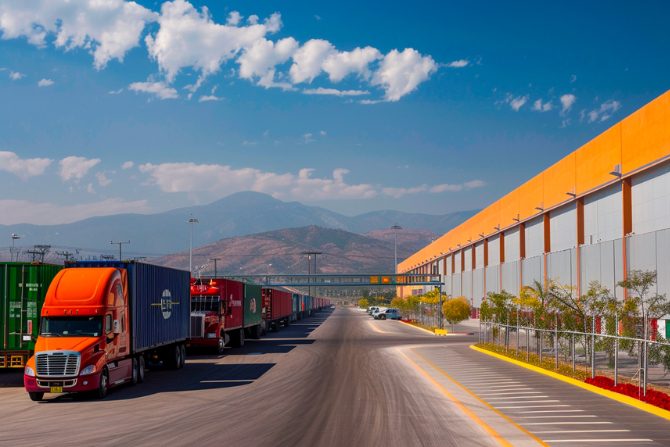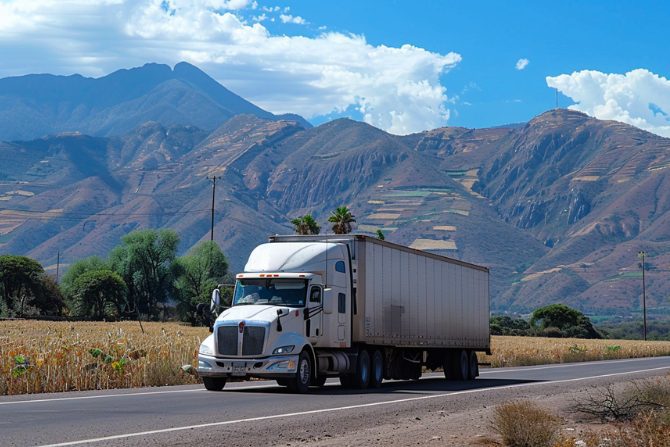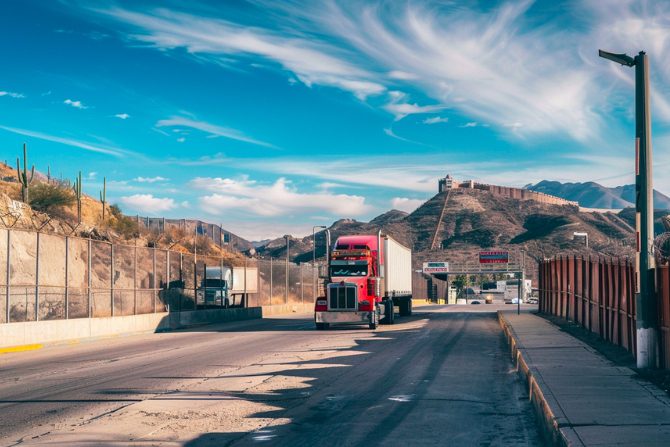
Imagine a world where every perishable item reaches its destination perfectly preserved. That’s the promise of reefer trucking in Mexico—a game changer for businesses moving sensitive goods across borders. With the right approach, items from pharmaceuticals to fresh produce can travel through varying climates without losing their integrity. It’s not merely about preventing spoilage; it’s really about making sure every delivery screams quality and earns your trust. But here’s the twist—achieving this level of precision requires more than a basic know-how of logistics.
In an era where consumer expectations are sky-high, and the climate is as unpredictable as ever, mastering temperature-controlled transportation has become not just beneficial but essential. Let’s dive into what makes this service stand out and why ignoring it could be a costly mistake for your supply chain strategy.
Table of Contents:
- Understanding reefer trucking in Mexico
- Key Components of a Temperature-Controlled Supply Chain
- Advantages of Intermodal Shipping for Temperature-Controlled Cargo
- Navigating Customs and Regulations for reefer trucking in Mexico
- Case Studies: Successful reefer trucking in Mexico
- Choosing the Right Logistics Partner for reefer trucking in Mexico
- FAQs in Relation to reefer truckingMexico
- Conclusion
Understanding reefer trucking in Mexico
Reefer trucking refers to the transportation of temperature-sensitive goods using refrigerated trucks, commonly known as “reefers”. These trucks are equipped with refrigeration units that can maintain specific temperature ranges, ensuring that perishable items remain fresh and safe during transit. When it comes to shipping temperature-sensitive goods to Mexico, having a solid grasp on temperature control is crucial. You’re dealing with products that can easily spoil or lose their integrity if not kept in the right conditions.

Reefer trucking uses refrigerated trucks to keep perishables fresh by maintaining specific temperatures.
Importance of Temperature Control
Temperature control is a make-or-break when shipping perishable goods and temperature-controlled products, especially with Mexico’s diverse climate and longer transit times. Proper temperature control is the only way to maintain quality from start to finish.
Some of the most common temperature-sensitive goods shipped to and within Mexico include:
- Pharmaceuticals
- Food and beverages
- Chemicals
- Electronics
- Certain automotive parts
Each of these products has its own specific temperature requirements that must be followed precisely throughout the entire shipping process.
Challenges in Mexico’s Climate
Mexico’s climate is all over the place. You’ve got hot and humid conditions along the coasts and a more temperate weather as you move inland.
Such diverse climatic conditions make it quite a challenge to keep a consistent temperature while shipping. You need specialized equipment and a team that knows their stuff to pull it off.
Key Components of a Temperature-Controlled Supply Chain
A lot goes into a temperature-controlled supply chain in Mexico. It’s not as simple as throwing your products in a refrigerated truck and calling it a day.

Temperature-controlled supply chains in Mexico require more than just using refrigerated trucks.
Transportation Methods
Temp-controlled shipping in Mexico usually involves a mix of transportation modes, like:
- Refrigerated trucks
- Intermodal containers
- Air freight
The key is finding the right combo of transportation methods for your specific products. You’ve got to factor in the required temperature range, transit time, and of course, your budget.
Proper warehousing and storage facilities play a huge role in temp-controlled supply chains in Mexico. These places need to be decked out with advanced climate control systems, monitoring devices, and backup power.
You can’t afford the slightest mishaps when it comes to keeping your products at the right temperature 24/7.
Packaging Solutions
Packaging is another piece of the puzzle. You need the right insulated containers, thermal blankets, and even phase-change materials. The type of packaging all depends on your product’s specific temperature needs.
Monitoring and Tracking Systems
Real-time monitoring and tracking systems are a must for temp-controlled shipping. You need to know what’s going on with your shipments at all times. The right systems can alert you ASAP if there are any issues. As a result, you can jump into action and prevent any product spoilage.
According to a study by the Global Cold Chain Alliance, 30% of temperature-sensitive products are damaged during transport due to a broken cold chain.
Advantages of Intermodal Shipping for Temperature-Controlled Cargo
Intermodal shipping, a combo of truck and rail transportation, offers several benefits when it comes to temp-controlled cargo in Mexico.
By using rail for the long haul, you can seriously cut down on your overall transportation costs. Rail isjust more efficient, plain and simple.

Intermodal shipping cuts costs by combining rail efficiency with truck flexibility.
Reliability and Consistency
Intermodal shipping is incredibly reliable for temp-controlled cargo. You’ve got dedicated schedules, specialized equipment, the works. This all adds up to on-time deliveries and a lower risk of temperature screw-ups.
Intermodal shipping is also a greener choice compared to just using trucks. Shifting some of the journey to rail means lower greenhouse gas emissions–a big win for the planet!
Flexibility and Scalability
Intermodal shipping gives you the flexibility to adjust your capacity based on demand. With Mexico’s extensive rail network, you can efficiently ship your temp-controlled products to key markets all over the country.
Intermodal shipping in Mexico has grown by 8.4% annually since 2009, thanks to infrastructure investments and an increased demand for cross-border shipping solutions.
Navigating Customs and Regulations for Reefer Trucking in Mexico
Customs and regulations can be a real headache when it comes to temp-controlled shipping in Mexico. But don’tworry, I’ve got you covered.

Navigating customs and regulations is crucial for successful reefer trucking in Mexico.
Documentation Requirements
First off, you need to make sure you have all the right paperwork. Temp-controlled shipments to Mexico require the following:
- Commercial invoices
- Packing lists
- Temperature monitoring records
If your documentation isn’t accurate and complete, you’re going to have trouble getting through customs.
Customs Clearance Process
The customs clearance process for temp-controlled cargo in Mexico has a few steps:
- Submit your documents
- Inspection
- Pay duties and taxes
Pro tip: work with experienced customs brokers who know the ins and outs to help streamline the process and keep you compliant.
Compliance with International Standards
When it comes to temp-controlled shipping in Mexico, you’ve got to play by the rules. That means following international standards like:
- Good Distribution Practices (GDP) for pharmaceuticals
- Hazard Analysis and Critical Control Points (HACCP) for food products
Stick to these standards to ensure your products are safe and top-notch.
Working with Experienced Logistics Providers
Customs and regulations in Mexico can be tricky. That’s why partnering with experienced logistics providers who specialize in temp-controlled shipping is a game-changer.
We’ve got the expertise, resources, and technology to keep you compliant and make your shipping process smooth.
Case Studies: Successful reefer trucking in Mexico
A recent news report highlighted a major U.S. food manufacturer’s success in shipping temperature-sensitive products to Mexico using intermodal services.
By adding rail to their supply chain mix, they:
- Cut costs
- Improved transit times
- Maintained product quality
This case study is proof that intermodal shipping gets the job done for temp-controlled cargo in Mexico.

A U.S. food manufacturer successfully used intermodal shipping for reefer trucking in Mexico, cutting costs, improving transit times, and maintaining product quality.
Choosing the Right Logistics Partner for Reefer Trucking in Mexico
Picking the right logistics partner for your temp-controlled shipping needs in Mexico is crucial. Here’s what to look for:
You want a provider who knows their stuff when it comes to handling sensitive cargo. Look for partners with a proven track record of successful temp-controlled shipments. They should have a deep understanding of the unique challenges in the Mexico market.
Network and Infrastructure
A reliable logistics partner will have a strong network and infrastructure in Mexico. This includes temp-controlled warehouses, transportation assets, and cross-border capabilities.
With this setup, your temp-sensitive cargo will be handled efficiently and consistently through every step of the supply chain.
Choose a logistics partner that’s all about advanced technology and innovative solutions for temp-controlled shipping. We’re talking real-time monitoring systems, predictive analytics, automated alerts – the whole nine yards.
This tech helps them stay on top of potential issues and maintain optimal conditions for your cargo.
Customer Support and Communication
Communication is key when you’re working with a logistics partner for temp-controlled shipping in. You want a provider that offers:
- Dedicated account management
- 24/7 customer service
- Proactive communication
They should keep you in the loop about your shipments and address any concerns ASAP.
✐ Key Takeaway:
Mastering reefer trucking in Mexico means knowing your stuff about climate challenges, picking the right transport mix, and using top-notch warehousing and packaging. But it doesn’t stop there. You also need real-time tracking to prevent spoilage, understand intermodal’s perks like cost savings and reliability, navigate tricky customs with ease, and pick a logistics partner who brings experience, tech savvy, and solid communication to the table.
FAQs in Relation to reefer trucking in Mexico
How do you ship temperature-controlled items?
To ship them right, use insulated packaging and refrigerants. More importantly, pick a shipping service that specializes in temp control.
Why is it difficult to ship to Mexico?
Shipping hurdles include complex customs, varied regulations across states, and navigating the terrain. Plus, security concerns add another layer of challenge.
What is temperature-controlled freight shipping?
This method keeps goods at specific temps during transit. It’s key for perishables like food and pharma products to stay fresh or effective.
What is required to ship to Mexico?
You’ll need the right paperwork: commercial invoice, bill of lading, tax ID number. Also get familiar with NAFTA rules if applicable. For more info, please visit this article: Shipping to Mexico, Customs Requirements.
Conclusion
The journey through reefer trucking in Mexico might seem daunting at first glance—with various challenges such as diverse climates and strict customs regulations standing guard like sentinels on high alert. Yet, with knowledge comes power—the power to transform these hurdles into stepping stones towards excellence.
This isn’t merely about keeping products cool or warm; it’s about embracing innovation within your supply chain to ensure each product tells a story of quality upon arrival. The silent workhorses behind successful deliveries don’t seek applause but rather satisfaction in efficiency and reliability that spans continents.
Reefer trucking doesn’t have to be a labyrinth filled with confusion and despair but can become a clear path toward sustaining growth and expanding markets when approached correctly—ensuring that no matter where you’re headed within or beyond Mexican borders, perfection remains unspoiled throughout every leg of the journey.


